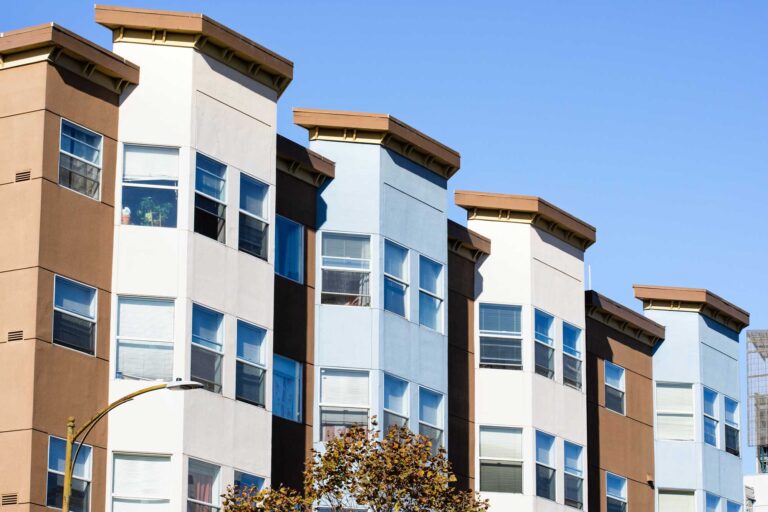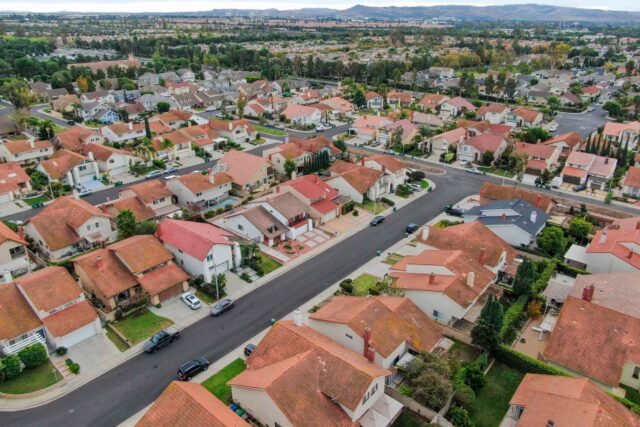With the state’s eviction ban set to end on June 30, almost 1.5 million California renters are behind on their rent payments, and more than 600,000 of them believe that they are very or somewhat likely to face eviction in the next two months, according to recent Census Bureau surveys. As it has in many other areas, the pandemic has underscored broad inequities with respect to housing security.
Overall, about one in seven adult renters in California report being behind on their rent, a share that has not changed much over the course of the pandemic. Californians who have been economically hurt by the pandemic are much more likely than others to be behind. Specifically, renters who lost employment income in the month preceding the census survey were almost three times more likely to be behind than other renters (27% vs. 10%). Low-income renters (those with household incomes under $25,000) are five times more likely than renters with high incomes ($75,000 or more) to be behind in rent (21% vs. 4%). And Black, Latino, and Asian renters are more likely to be behind than white renters (17% vs. 11%).
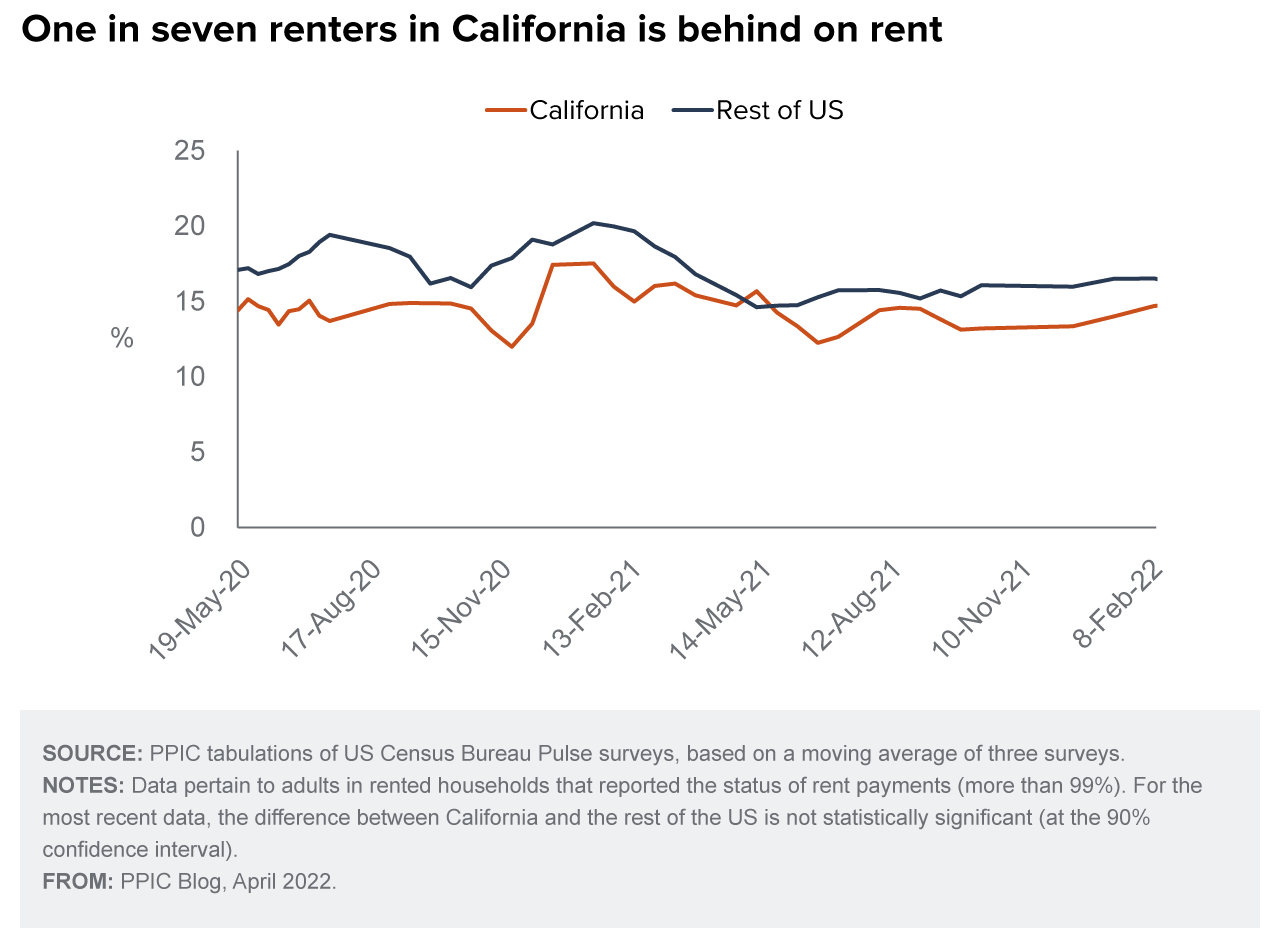
College graduates have largely avoided economic and employment hardships—they are often able to work remotely and have relatively high wages. These renters are much less likely (7%) to be behind on rent.
Catching up won’t be easy for most of those who have missed rent payments; a large majority (73%) are at least a couple of months behind, and 27% are five or more months behind. These renters are especially pessimistic about their future housing prospects. Almost two-thirds (63%) of renters who are at least two months behind in rent believe it is somewhat or very likely they will be evicted.
California rental markets have been among the most expensive in the nation for many years. In 2019, 26% of California’s renters spent more than half their incomes on housing, compared to only 22% in the rest of the nation. Five of the six most expensive rental markets nationwide are in California (the one other market is New York City).
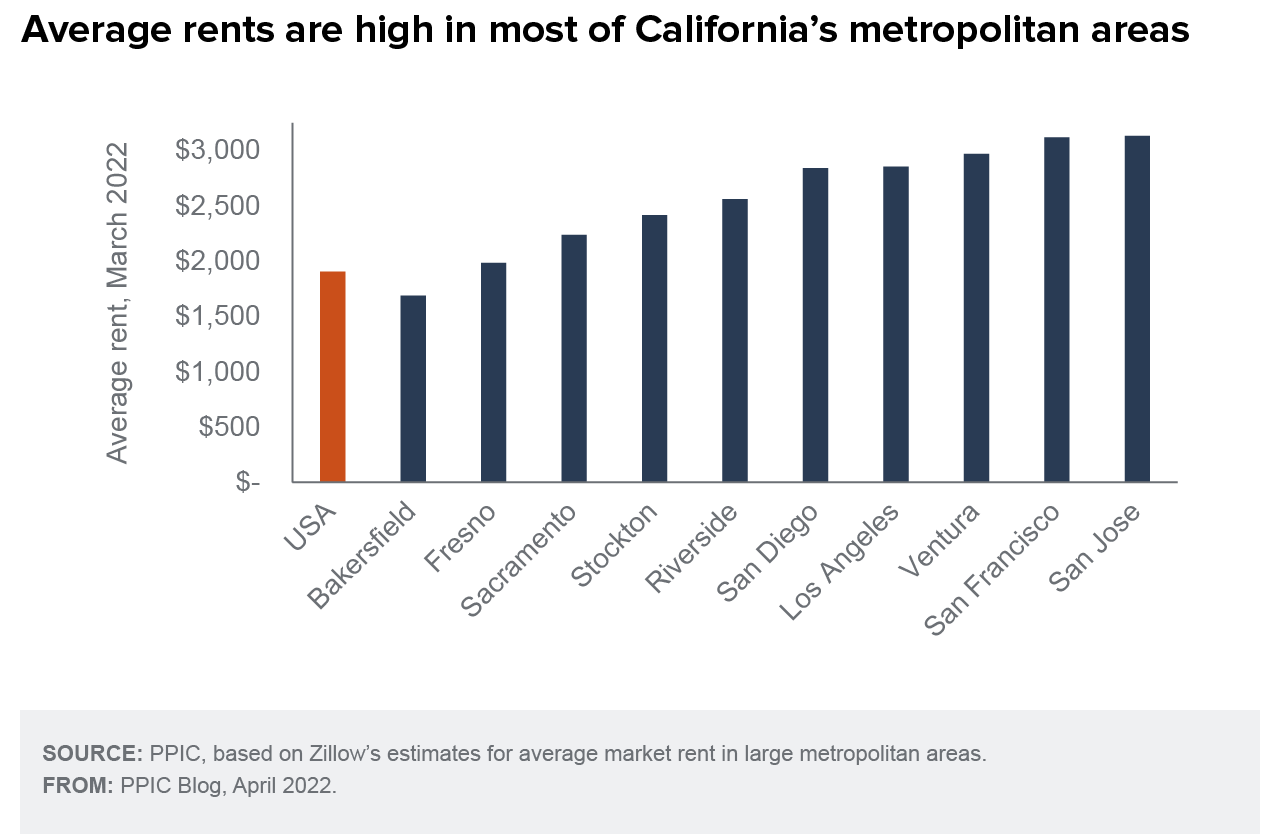
While Bay Area rents have not changed much during the pandemic, rents have risen substantially in much of the rest of the state. Inland markets that used to be affordable have become much less so. Now, only Bakersfield has average rents lower than those in the rest of the country.
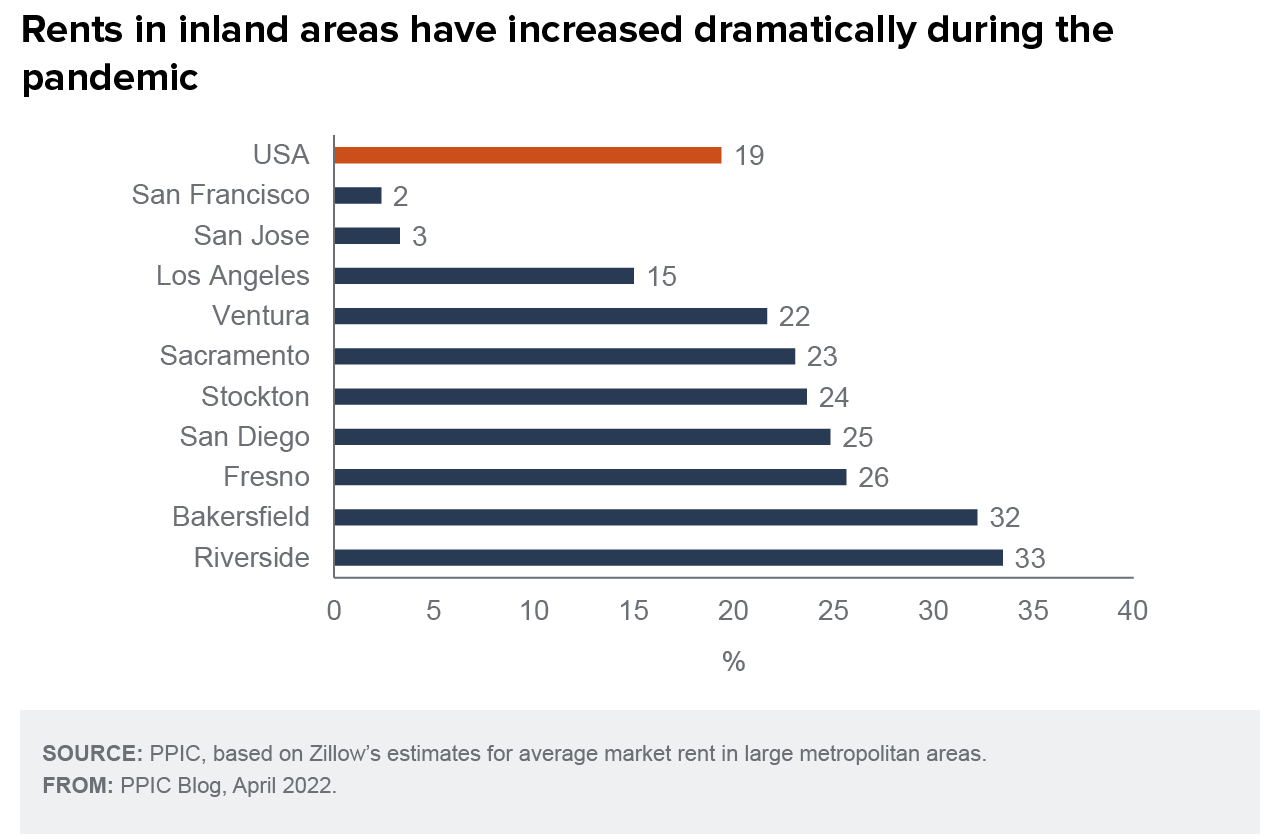
Policies and programs to assist overwhelmed renters—and pay landlords—have helped. As of April 19, the California Department of Housing and Community Development (HCD) had distributed $2.8 billion in federal COVID emergency rental relief to 252,000 rental households (a dramatic increase over the $0.6 billion distributed to 50,000 renters as of September 21, 2021). And renters who have pending applications for assistance are protected from eviction through June. Some of the state’s largest counties—including San Diego, Sacramento, Fresno, and Riverside—implemented their own renter assistance programs, so the number of beneficiaries is probably significantly higher.
Even though aid has increased, many still struggle to pay rent. While HCD reports receiving 500,000 applications for assistance, census surveys find that the majority (55%) of Californians who were behind on rent in mid-March had not applied. (The application deadline was March 31.) Many of those who did apply were waiting to hear if their applications would be approved.
Housing is an essential component of California’s economic recovery and the well-being of its residents. The sharp increases in California’s least expensive rental markets are of particular concern, as renters in those markets tend to have lower incomes than those in the more expensive coastal markets. (For example, San Francisco renters pay a much lower share of their income on rent than do renters in Fresno.) When the state’s eviction moratorium expires completely at the end of June, renters and landlords will enter a difficult new phase of the pandemic’s far-reaching impact.
